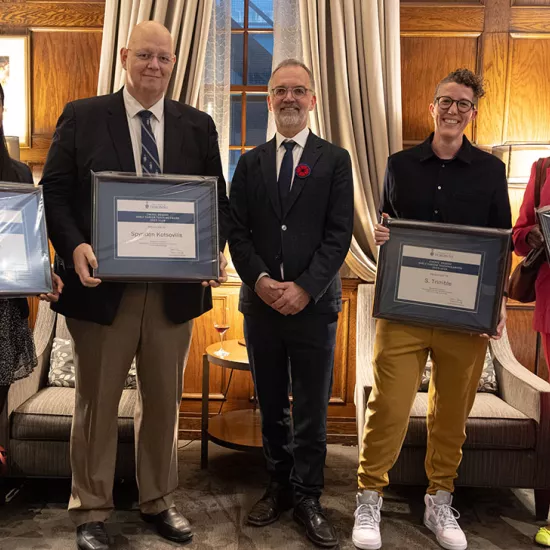Indigenous more likely to be victims of homicide: UTM student study

Student research from the University of Toronto Mississauga reveals new information about Indigenous homicides in Ontario. The study by Navneet Aujla, a fourth-year student with UTM’s Forensic Science program, confirms and updates 20-year-old conclusions that Indigenous people are more likely to be victims of homicide compared to the general population, and pinpoints homicide hotspots in the province.
Aujla presented her study at a student research symposium on April 6. For the project, she surveyed provincial data for homicide cases investigated in Ontario between 2005 and 2015, searching for cases that involved victims identified in the data as Indigenous. She categorized cases according to age, gender and geographic location, hoping to pinpoint patterns and vulnerable groups.
According to Statistics Canada, Indigenous people make up about 2.4 per cent of the total population of Ontario. During the 10-year sample period, Aujla found that five per cent (106 of 2,091) of homicide cases involved victims who were identified in the data as Indigenous. Male Indigenous victims comprised 5.9 per cent of homicide cases, (90 out of 1,518 homicides); and Indigenous female victims accounted for 2.9 per cent (16 out of 573) of homicides.

Northern Ontario data revealed a particularly high rate of homicide involving Indigenous victims, especially in the Thunder Bay and Sudbury regions. “Indigenous people were not overrepresented as homicide victims across all of Ontario, but they were overrepresented in the Thunder Bay area which had a higher rate of Indigenous homicides across all three categories of age, gender and geographic location,” Aujla says. Data also revealed higher-than-average rates of homicide for Indigenous people in the London and Hamilton regions.
“Toronto has a high Indigenous population, too, but Indigenous homicides weren’t over-represented there,” she says.
Surprisingly, Aujla found that the number of Indigenous women involved in homicides was comparable to the number of Indigenous women in the general population. She cautions that this could be due to inadequate reporting procedures, which could skew the reported numbers lower. “We don’t know exactly how many people who are murdered are Indigenous,” she says. “If it was included in the investigation, it was included in the database. “
“There is currently no standardized procedure to report if Indigenous status,” she says. “As such, a number of cases might not have been appropriately marked.”
In her conclusion, Aujla recommended more standardized reporting procedures to record Indigenous status in murder investigations. She would also like to see province-by-province comparisons of data to gain a Canada-wide perspective of the issue.
Aujla completed the study as part of a fourth-year undergraduate research internship placement with the Ontario Forensic Pathology Service which provides pathology services for the Ontario police forces. The project was supervised by Dr. Kona Williams, Canada’s first Indigenous forensic pathologist. Williams, whose research interests include the cause and manner of death in Indigenous communities, completed her own post-doctoral studies with U of T’s laboratory medicine and pathobiology department.
Aujla presented her findings at the annual Forensic Science Day symposium at UTM. The event gives undergraduate students the chance to present results from undergraduate research projects supervised by mentors in police services, law, medicine and other forensic services. Other research presented at the event included the biological effects of aquatic ecosystems on decomposition; the prevalence in marijuana and alcohol in fatal collisions in Nova Scotia; and comparison of digital and manual techniques in forensic skull reconstruction.



